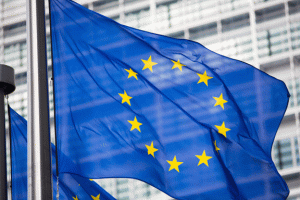Europe’s steel industry faces an unprecedented threat
President Donald Trump had scant regard, nor interest, in the impact his decision in 2018 to impose 25% import duties on steel products would have on other markets around the world — his focus was, reasonably enough, purely on the U.S.
But when a market the size of the U.S. takes such profound steps, the ripples spread far and wide.
Horrified at the prospect that displaced steel would flood the European market, local steel producers successfully lobbied the European Commission to impose safeguards, allowed under WTO rules, to protect domestic producers from the risk of displaced steel production, principally from Asia, looking for a home in Europe.
Metal prices fluctuate. Key is knowing when and how much to buy with MetalMiner Outlook. Request a free trial.
The E.U.-imposed quotas in 2018 on 26 grades of steel and stainless steel including hot-rolled and cold-rolled sheets, rebars, and railway material (set at the average of 2015-17 volumes, plus 5%). Imports that exceeded this quota would incur a 25% tariff, effectively placing a ceiling on imports based on historic volumes. At the time, this amounted to about 20% of the European market, but as required under WTO rules the quota increases by 3% per annum and is supposed to expire in 2021, three years after it was introduced.
So much is history and while no domestic producer likes imports, the system has worked relatively well — or it did until the coronavirus came along.
The European Steel Association (EUROFER) has now slammed the Commission’s most recent periodic review of the policy, saying the Commission has failed to recognize the scale of the increased risk to the European steel industry or to account for the fact 40% of workers are currently furloughed in the face of an unprecedented collapse in demand.
Reuters reports there has been a 50% demand slump across the continent following the arrival of COVID-19 in mid-March. Eurofer and the CEOs of Europe’s leading steel producers issued a joint letter demanding a rethink, saying the demand destruction as a result of the pandemic risked the very existence of the European steel industry if inventory build in China, Russia, Indonesia and India were to be released as lockdowns in those countries end.
Eurofer accused the Commission of completely failing to grasp the scale of the risk, suggesting their proposed changes are just tinkering around the edges.
The Commission proposals currently run to moving to quarterly management of all country-specific quotas and tightening access to residual quotas by nations that have exhausted their specific allotments but allowed the continuation of the 3% annual increase to go through.
Eurofer, by contrast, had demanded a 75% cut in quotas but was flatly rejected by the Commission.
Eurofer may be right in their concerns, the global steel market is certainly going to be in turmoil for at least this year and probably next as different regions open at different times. Demand will likely be poor for 12-18 months. Currently, Europe is actually exporting HR coil to China, as Europe’s prices have proved some of the lowest in the world this month; consequently, imports have slumped for the time being.
Looking for metal price forecasting and data analysis in one easy-to-use platform? Inquire about MetalMiner Insights today!
Maybe the price disparity between Europe and China should be all the Commission needs to see the reality of the situation.
If European steel, normally one of the highest-cost regions in the world, is being exported — even in limited quantities — to China (one of the lowest-cost steel producers in the world) then something is clearly awry.



Leave a Reply